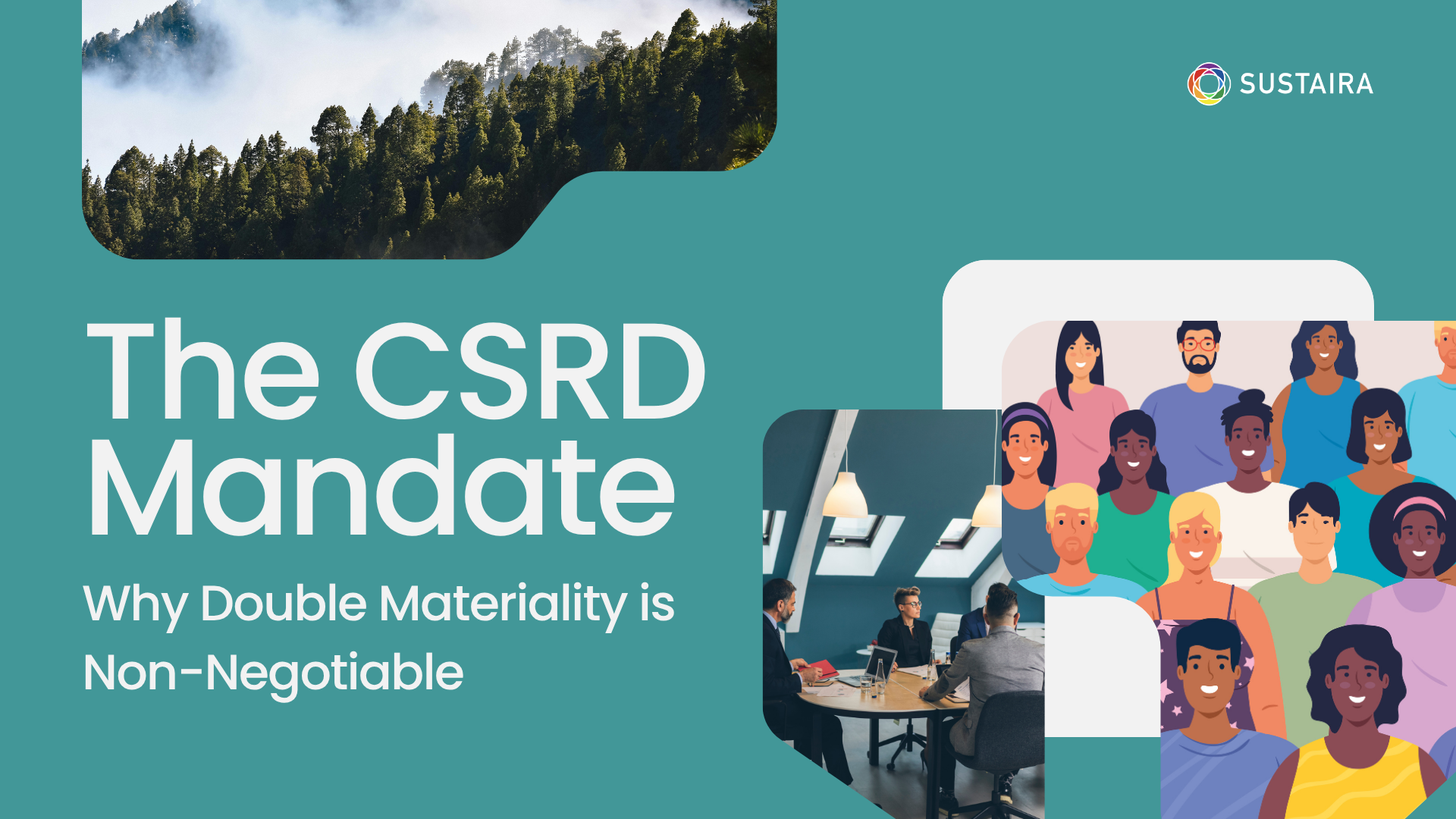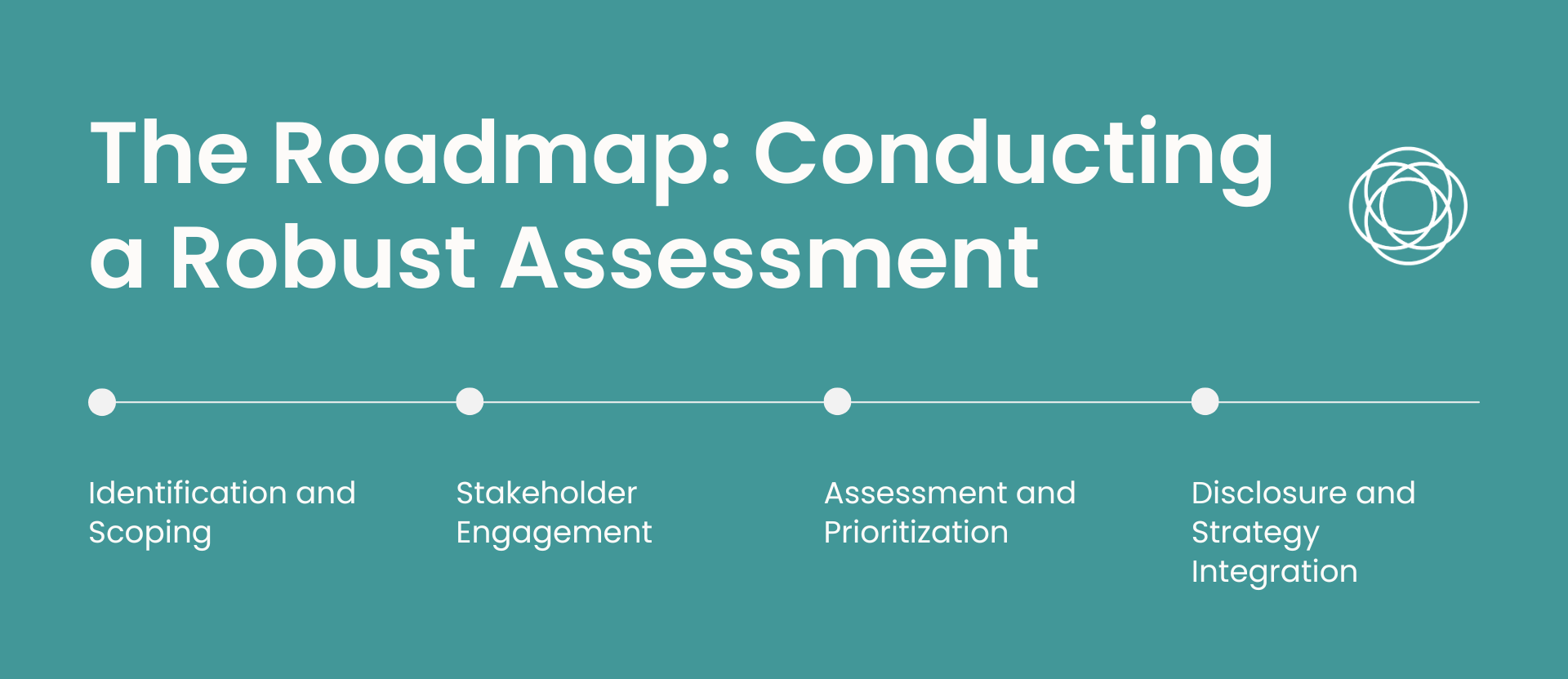The CSRD Mandate: Why Double Materiality is Non-Negotiable
The CSRD requires in-scope companies, potentially over 50,000 across Europe, to report sustainability information in accordance with the European Sustainability Reporting Standards (ESRS). The ESRS, developed by EFRAG, explicitly embeds Double Materiality as the foundational principle for defining which topics a company must report on.
Double Materiality requires organizations to evaluate sustainability matters through two distinct, yet interconnected, lenses:
A sustainability matter is considered material and must be reported if it meets the criteria for either financial materiality or impact materiality, or both.
Deconstructing the Dual Lens: Financial vs. Impact
A deeper understanding of each dimension is crucial for a robust assessment.
1. Financial Materiality: The "Inside-Out" Perspective
This lens assesses how external sustainability issues translate into quantifiable financial risks and opportunities (IROs) for the company. It goes beyond immediate balance sheet effects to consider long-term viability.
Key Examples of Financially Material Issues:
Climate-Related Physical Risks: Increased operational costs due to extreme weather events (e.g., flooding damaging facilities, droughts increasing water scarcity/price).
Transitional Risks: Costs associated with policy changes (e.g., carbon taxes, stricter emissions standards), or market shifts (e.g., consumer preference for low-carbon products leading to asset devaluation).
Opportunities: Competitive advantages from developing circular business models, investing in renewable energy to secure energy supply, or innovating with sustainable products that capture new market share.
2. Impact Materiality: The "Outside-In" Perspective
This lens requires the company to look at its own footprint, assessing its actual and potential, positive and negative, material impacts across its entire value chain, from upstream supply to downstream use. This is often the most challenging aspect, as it mandates transparency on issues that may not yet have a direct financial consequence but carry significant ethical and reputational weight.
Key Examples of Impact Materiality Issues:
Negative Impact: Labor rights violations in a third-party supplier’s facility, significant water consumption in a region experiencing scarcity, or air pollution from manufacturing operations.
Positive Impact: Investments in local community development, developing products that offer a measurable social benefit, or implementing cutting-edge biodiversity protection measures at operational sites.
The Strategic Imperative: Beyond Reporting
The true power of Double Materiality is its ability to bridge the gap between sustainability teams and executive leadership. When executed properly, it moves the conversation from abstract ESG compliance to concrete strategic resilience and competitive advantage.
Integrated Risk Management: By considering both financial and impact risks, organizations can avoid blind spots. For example, poor labor practices (impact risk) can quickly become a financially material risk via lawsuits, supply chain disruption, or reputational damage.
Capital Allocation: The assessment illuminates where capital expenditures should be prioritized, not just to mitigate risk, but to capture new opportunities aligned with a decarbonizing and sustainable economy (e.g., investing in R&D for resource-efficient technologies).
Investor Relations: Increasingly, global capital flows (especially under the EU's Sustainable Finance Disclosure Regulation (SFDR)) rely on the data generated by the CSRD. A robust Double Materiality assessment signals a company's commitment to long-term value creation and provides investors with the non-financial data they need to meet their own disclosure requirements.
The Roadmap: Conducting a Robust Assessment
A high-quality Double Materiality assessment is a dynamic process, not a static checklist. It requires rigor, data integration, and continuous stakeholder feedback.
1. Identification and Scoping
Start with a comprehensive list of potential sustainability matters, utilizing the ESRS topics (e.g., E1 Climate Change, S1 Own Workforce). Map these across your entire value chain, considering the full life cycle of your products and services.
2. Stakeholder Engagement
This step is critical for validating both impact and financial perspectives. Engage internal stakeholders (e.g., Risk, Finance, Operations, HR) to gauge financial relevance, and external stakeholders (e.g., NGOs, local communities, customers) to understand actual and potential impacts.
3. Assessment and Prioritization
This is where the 'double' nature is visualized, often in a Double Materiality Matrix.
Score each matter against both axes (financial and impact) based on severity, likelihood, and scale.
Topics scoring high on either axis are considered material and must be included in the reporting scope. Topics scoring high on both are the most critical strategic priorities.
4. Disclosure and Strategy Integration
The final output directly informs your CSRD/ESRS report. For each material topic, you must disclose your policies, actions, metrics, and targets. Crucially, the outcome should also inform the enterprise-wide sustainability strategy, risk management framework, and incentive structures.
How Sustaira Helps Simplify CSRD Complexity
The complexity of mapping global value chains, engaging diverse stakeholders, and collecting granular data according to ESRS requires purpose-built technology. Sustaira's Materiality Solution is designed to turn this compliance challenge into a structured, strategic asset.
Configure Your Own Materiality Assessments
Flexibility is essential, especially when adapting to new regulations or working with different business units or consulting teams. The Sustaira materiality solution gives you the power to configure it any way you need. You can:
Set custom categories and topics relevant to your sector.
Create various assessments for different entities, timeframes, or reporting standards.
Adjust these variables and definitions at any time to ensure compliance with evolving standards.
The Scoring Engine: Rigor in Prioritization
To ensure a robust and verifiable assessment, the platform digitizes the scoring process:
You score the importance of each topic on a simple, consistent scale (e.g., 1-5) for both Business weight (Financial Materiality) and Stakeholder weight (Impact Materiality).
For scope management, you can easily deselect any topics that are definitively not relevant to a specific assessment, streamlining the analysis.
Dynamic Visualization: The Materiality Matrix
The core deliverable of the assessment is a clear visualization of priorities. Upon adding both weights to each topic, you can instantly view your personalized Materiality Matrix .
This dynamic matrix clearly identifies the items scoring high on both or either axis, allowing you to understand which items are the highest priority. This visualization is the foundation for strategic action: Set your goals based on these priorities to take action and make a difference!
Integrated Data and Customization
Sustaira integrates the materiality output with downstream reporting and action planning. This is just a glimpse into the platform's power. If your organization requires specific data integrations, unique stakeholder workflows, or bespoke features, the application framework allows for features and functionality in addition to what is seen here to be rapidly added or customized.
By leveraging Sustaira, your organization can move beyond viewing Double Materiality as merely a reporting hurdle and embrace it as the strategic framework for building a resilient, sustainable, and future-proof business.



